Maybe you think to yourself, “What if Meteorite, but an actual meteorite?” Maybe you’re a cosplayer who needs a specific prop but doesn’t have the time or skill to create one matching your vision. Or maybe you’re just weirdly obsessed with cards like Bloodstone Cameo or Brokers Charm.
Turns out, when you can’t DIY, money makes a decent substitute.
From a simple sketch by an artist at a CommandFest to the most elaborate creation you can think of, you too can commission works and be a patron of the (Magic: The Gathering-related) arts on a scale that fits your budget, needs, and dreams. This article is your guide to being the sort of client that creators want to work with again and again.
Insiders and Outsiders
Beyond the spectrum of creator skill levels from “overly ambitious amateur” to “award-winning superstar,” there’s an important distinction between two types of creators you might commission to produce a work: inside and outside Magic.
An “insider” is anyone who has a significant connection to the broader world of Magic. An insider may enter that world as a player, a fantasy artist, or a game store employee, among other options. By contrast, an “outsider” is someone who does not have a significant connection to Magic. An outsider may be aware of the game or ignorant of it, and in either case does not know the jargon of Magic, such as “Planeswalker” or “Bant.”
This jargon makes it easier to communicate the essential concepts of a commission to an insider than an outsider. This ease also means that it’s best for your early commissions to be with insiders rather than outsiders as you gain experience with commissioning works. Of course, sometimes this simply isn’t possible, especially when a project requires highly specialized skills; while there are jewelry-making creators in the Magic world, gem engravers, for example, are harder to come by.
Artist Proof Drawings: The Commissioning On-Ramp
Fortunately for novice would-be commissioners, there’s an easy way to get started: artist proofs.
For those who don’t know (and remember, even the most experienced commissioners had to learn), artist proofs, also called artist’s proofs and often abbreviated “AP,” are prints of Magic: The Gathering cards given to illustrators as part of their overall compensation. These look like regular cards, except the backs are plain white. It is common, though not universal, for artist guests at events such as CommandFests to sell artist proofs and do sketches on the plain white backs for an additional fee. They may also accept more elaborate commissions, such as for full-blown paintings on the backs of one or more artist proofs.
Donny Caltrider wrote an excellent article about artist proofs in August 2021, and will speak to the process later on in the article. For now, suffice it to say that the conventions of getting a sketched artist proof are well-established and provide an excellent on-ramp for learning how to commission works.
Before You Commission
Research anyone you’re considering doing business with. This includes asking peers and combing social media. It’s remarkable how often a simple search on Facebook or Twitter will reveal something that’ll make you reconsider doing business with a creator or firm. Further, it’s worthwhile doing a routine check even on folks you’ve worked with before; people change or reveal themselves online, often in unexpected ways.
Until there’s a contract or money changes hands, walking away is free. If you’re not comfortable making a transaction, don’t! It’s perfectly okay to tell someone, “This isn’t working for me. Sorry, I’m out.” There’s no need to point out what made you uncomfortable or otherwise explain yourself further. Be especially alert if a creator is new to taking commissions or has negative feedback from past patrons floating around.
Well-written contracts are your friend. Here, “contracts” can mean the terms of sale posted on a website or custom contracts drawn up by creators. A well-written contract protects you and the creator by clearly stating what the creator will deliver and when for how much money on your end. This is where you’ll find essential details like shipping costs, deposits, and delivery schedules. Now is not the time to gloss over terms and conditions! You’re spending hard-earned money. Know what you’re spending it on.
Basic Commissioning Etiquette
Understand what a creator is offering, and respect that. If an artist has a table sign or website notice saying “No Alterations,” respect that and don’t ask; you’re not the exception to the rule, just a jerk the artist will remember. Similarly, if sketch subjects are at an artist’s discretion, don’t try to play art director for free. By contrast, if you look around and don’t see a sign, it’s okay to ask! The worst an artist can do is say no – which, again, you should respect, not trying to press the issue.
In-person and online prices are usually firm. Don’t be the person who tries to haggle down an artist at their CommandFest table. It’s tacky and a waste of time for you, the artist, and the whole line behind you. On the other hand, for an elaborate custom commission, negotiation is acceptable and often necessary. Just keep the negotiation respectful.
Never criticize or tear down a creator’s work as a negotiation tactic. This is terrible behavior and it doesn’t even make sense; if a creator’s work is so bad, why do you want it? Most creators, especially experienced ones, will spot this right away, shut you down, and send you packing, probably with a negative note in their mental or digital database.
Protecting Yourself
Being polite, however, does not equate to being a pushover.
Maintain clear, regular communication. “Regular” does not mean “frequent.” No creator likes a pest. Don’t let that stop you from maintaining clear and regular communication with creators, though. Set up a schedule with your creator for updates on major milestones (for example, the end of preliminary work is a typical check-in point for a complex project). If you don’t hear from a creator at an agreed-upon date, you are well within your rights to politely send a message to your creator and ask for an update. That’s not being a pest; that’s being a responsible patron.
Work through issues… Life happens. Projects get delayed or even canceled. It’s the creator’s responsibility to maintain clear communication, but sometimes a patron has to do most of the talking. Stay professional, but don’t be afraid to express clear and well-documented frustration if a creator is repeatedly missing deadlines or producing work that does not match your (reasonable) expectations.
…and keep your knives sharp. Sometimes, things really don’t go as planned. If money has already changed hands, refunds should happen in a timely manner. If it doesn’t, you may have to go to social media or, in extreme cases, court with your issue. It’s ugly, but sometimes it’s your one piece of leverage for getting made whole.
Of course, nobody would be a commissioner if awesome experiences didn’t outweigh the negative ones by a wide margin. To that end, here are two positive experiences the authors have had recently, starting with an artist proof painting commissioned by Donny Caltrider. Donny, this one’s all you!
Commissioning in Action #1: The Artist Proof On Ramp
As mentioned earlier, artist proofs are the perfect on-ramp to commissioning Magic: The Gathering related works, and I’ve found myself heavily in that sphere since the pandemic began in 2020. In many cases when I commission an artist proof, I leave the subject (and even sometimes the proof itself) to the artist—a true artist’s choice, because I’ve already done my research on who they are, what they do, and what to expect.
Earlier this year I was fortunate enough to be able to commission legendary Magic artist Christopher Moeller, and on the table was a painted Crush of Wurms AP to go along with the original artwork for the card that hangs on my office wall. Once the proof availability was confirmed, I sent a very loose request to his agent on what I was looking for:
“Vertical orientation for display, something related to the front featuring the distinct design of the Wurm. The rest is up to Chris entirely.”
His agent Kurt confirmed everything I said, and we were off! Pretty easy, right?
In some cases, an artist will send a sketch ahead of the final painting, but in this case, because the commission was in line with something that already existed, the linework and painting came at the same time, about 90 days after I sent the request. The final work was exactly what I was looking for, featuring that distinct Otaria Wurm and even the sorceress summoning the spell.
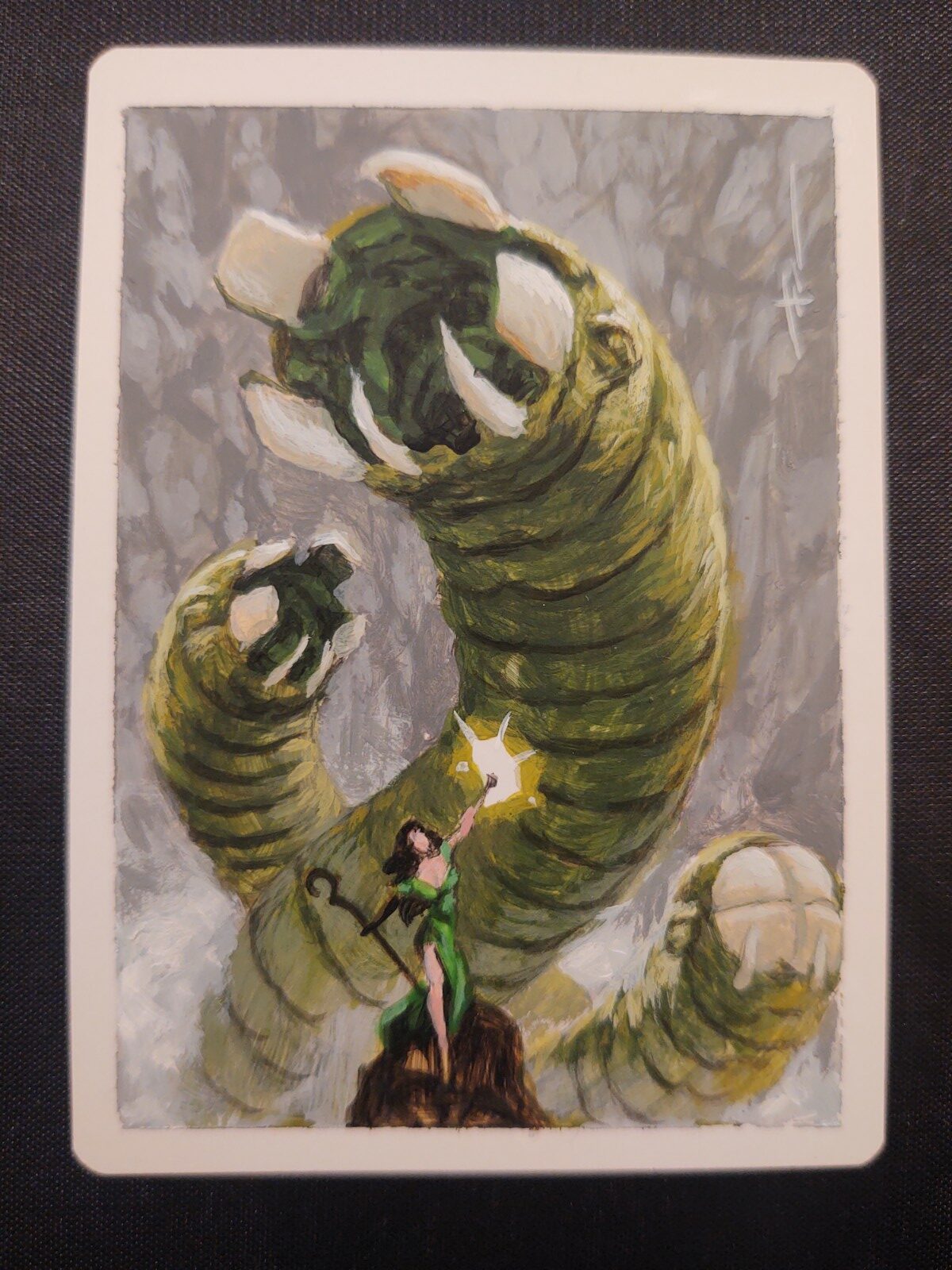
The back of Donny’s painted Crush of Wurms Artist Proof.
Why did it work so well? Because I knew Chris’s style, where his work shines, and stuck to what he does best. Artists love to do something that makes their heart sing, and if you can find that, I promise that you’ll be elated with whatever they’re creating for you.
You can read more about this AP and the painting behind it here. I’ll now kick it back to JDB for his latest commission, straight from the streets of New Capenna.
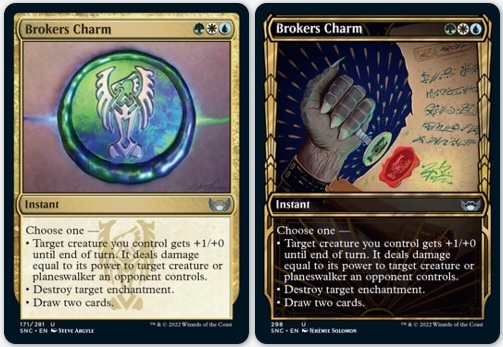
The regular and showcase variants of Brokers Charm.
Commissioning in Action #2: The Brokers Charm Desk Seal
I’ve long had a fascination with wax seals and the devices used to make them, but never really got deep into the practical side. When I saw the two versions of Brokers Charm, the idea for a real-life version of a Brokers desk seal crystallized in my head, and I already knew where I would look first, based on my research into potential creators for a previous engraving project.
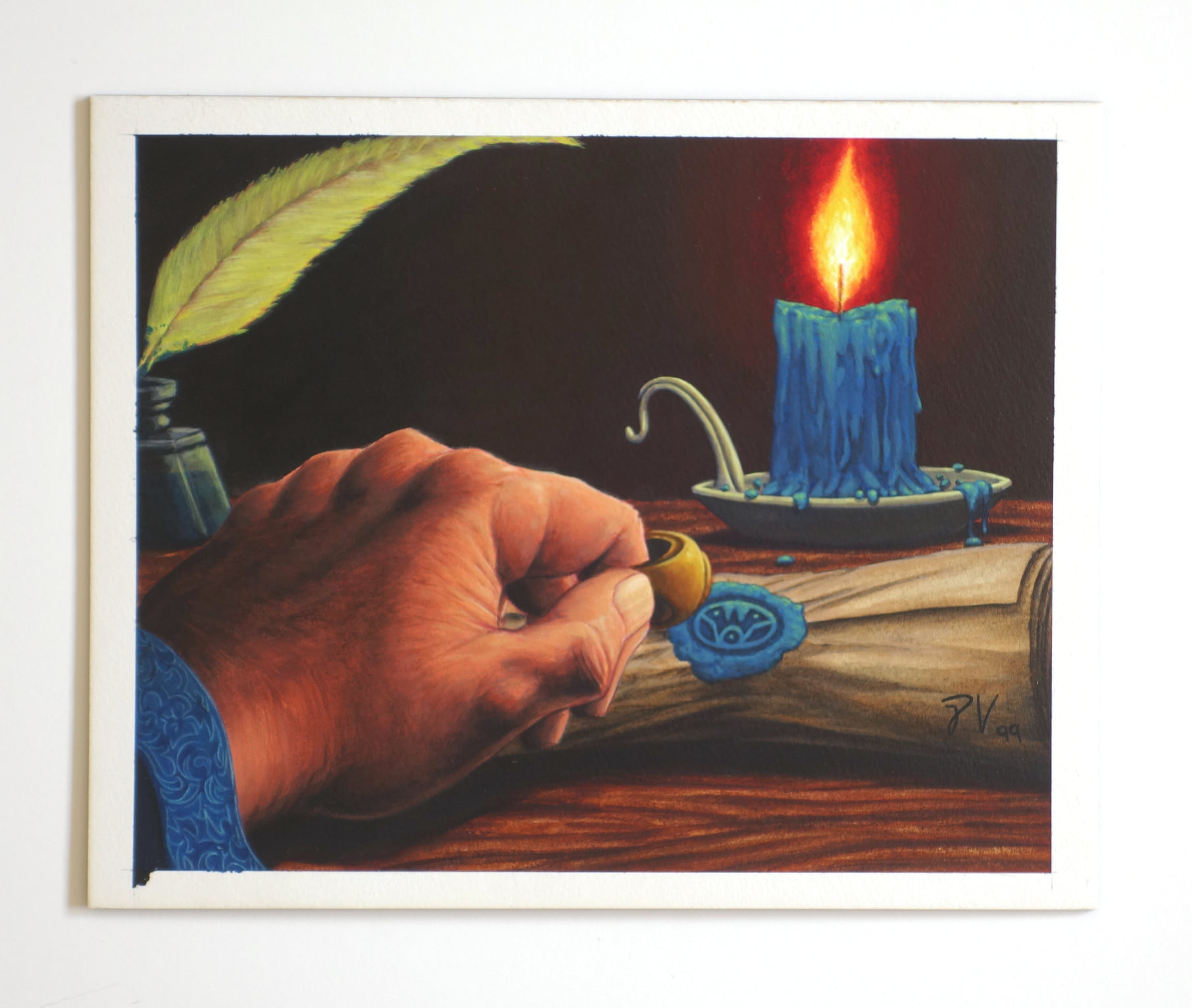
Art for Tidings by Pete Venters.
Dexter is an English family-run firm specializing in signet rings that can be used to seal documents, as seen on the original art for Tidings, for example. Among the related products they make are desk seals with wood handles and brass heads, just the sort of thing you’d imagine in the office of a high-ranking Brokers attorney.
Because Dexter is outside the Magic world, I was highly specific with my inquiry, using an image of Brokers Charm with Steve Argyle’s close-up on the magical wax seal as my visual aid, and finished with the line, “Yes, I know how weird this request sounds.”
The Dexter representative replied not to worry, that “this really isn’t a weird request by Dexter standards!” Wholesome or eyebrow-raising, depending on your point of view…
While Dexter lists prices for common seal designs, I wasn’t sure whether my custom Brokers design would cost extra. Fortunately, it didn’t, so after my usual cooling-off period to make sure I really wanted to spend my money on it, I went through with my order.
Throughout, I had an enjoyable experience. Even when things went wrong for a moment (mostly with trying to run a credit card internationally), communication was quick, clear, and always professional. At several stages, the Dexter team checked in with me to make absolutely sure I was getting what I wanted before proceeding with work.
And six weeks after my initial inquiry, I had a Brokers Charm desk seal with brass head and rosewood handle waiting on my doorstep.
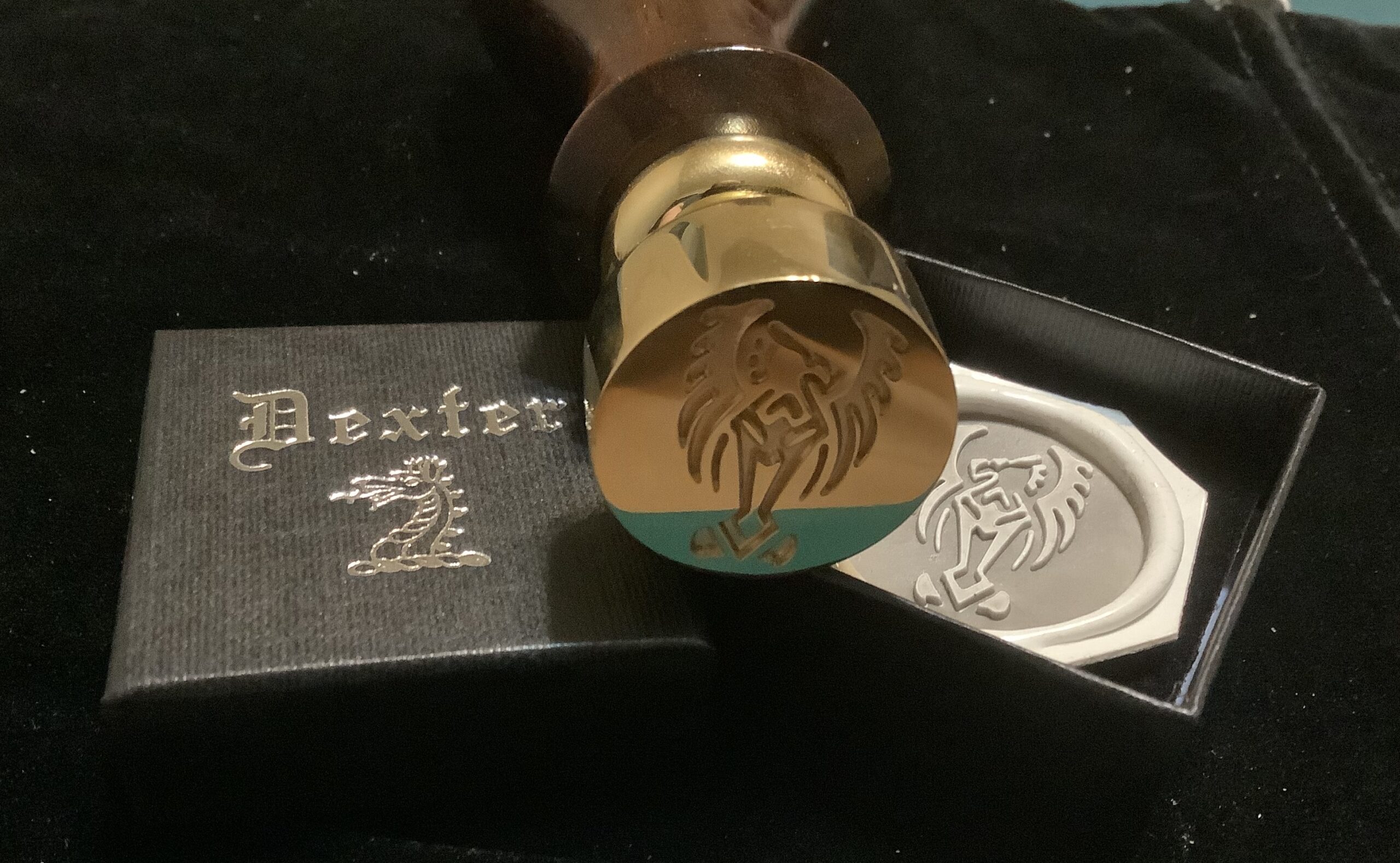
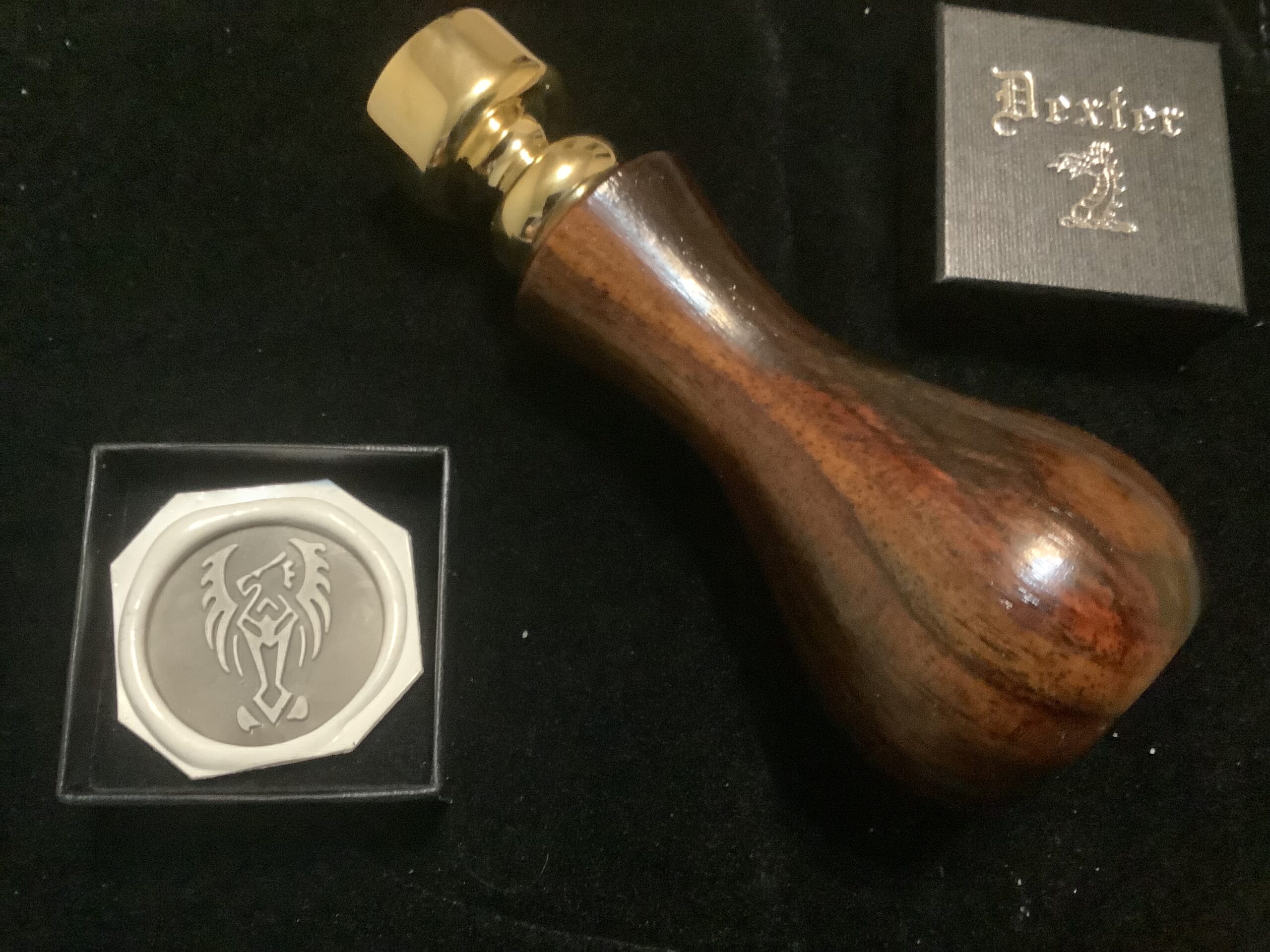
From the first touch, I knew I had quality in my hands. I was entirely thrilled with my experience commissioning the Brokers Charm desk seal, and the complimentary red wax sticks Dexter sent along will get quite the workout. Now to figure out the iridescent wax for that extra Brokers Charm style!
A Mission to Commission
When mass-produced fandom just won’t do, commissioning is a great way to express your passion for Magic with something unique and personalized. From a simple and relatively inexpensive artist’s sketch to bejeweled treasures, there’s a whole world of patronage out there, and of creators ready to make your dreams come true.
As Wizards of the Coast Principal Art Director Matt Cavotta once wrote, “Nothing touches an artist as much as the person who says, ‘I would like to own this little piece of your soul… here’s some cash.'”

